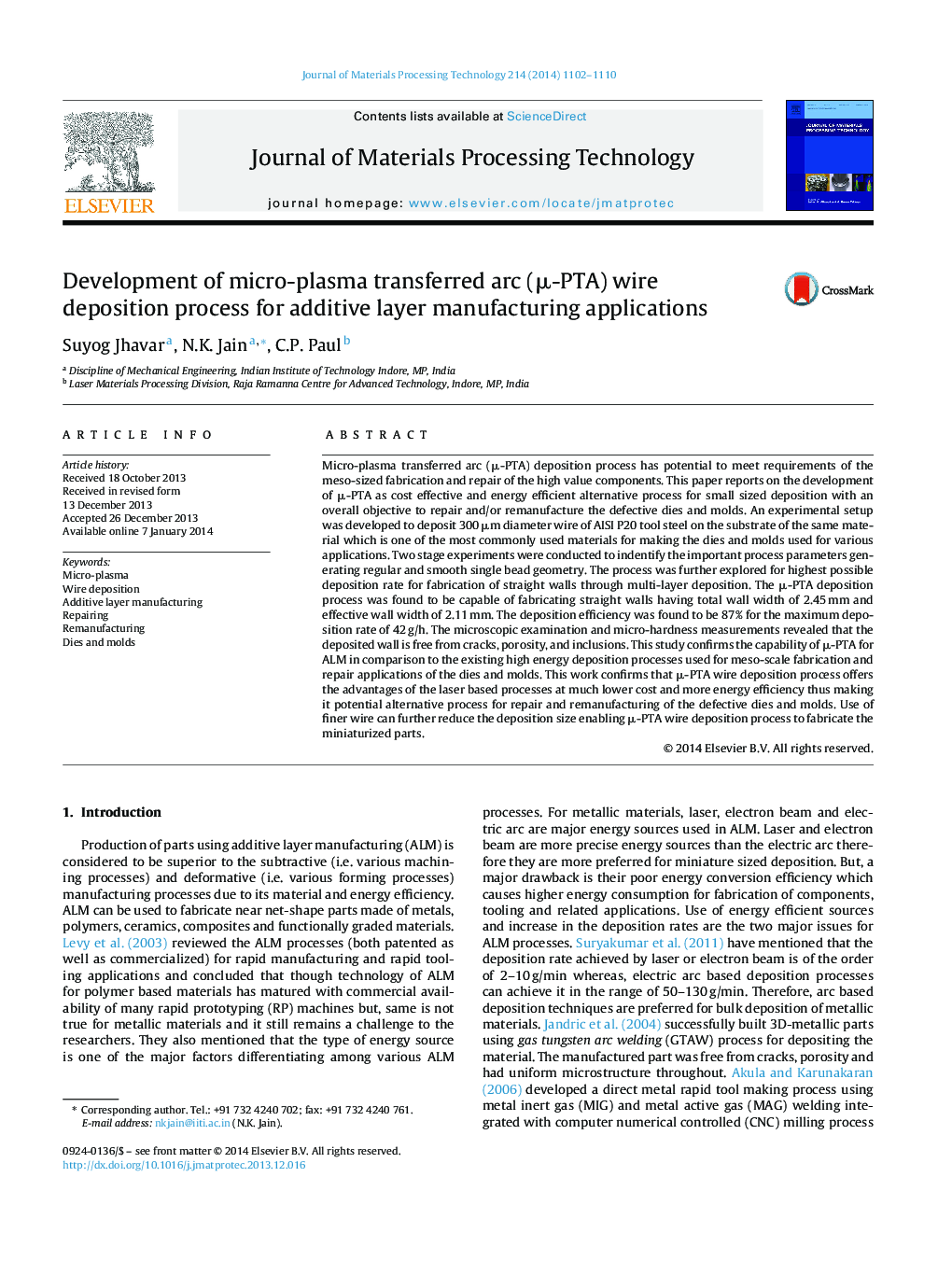| Article ID | Journal | Published Year | Pages | File Type |
|---|---|---|---|---|
| 795861 | Journal of Materials Processing Technology | 2014 | 9 Pages |
•Development of micro-plasma transferred arc (μ-PTA) process for multi-layer deposition.•Plasma power, wire feed rate, and worktable travel speed identified as important process parameters.•Multi-layer deposition is homogenous, free from defects and has negligible hardness variation.•μ-PTA can be an economic and energy efficient process for meso-scale multi-layer deposition.
Micro-plasma transferred arc (μ-PTA) deposition process has potential to meet requirements of the meso-sized fabrication and repair of the high value components. This paper reports on the development of μ-PTA as cost effective and energy efficient alternative process for small sized deposition with an overall objective to repair and/or remanufacture the defective dies and molds. An experimental setup was developed to deposit 300 μm diameter wire of AISI P20 tool steel on the substrate of the same material which is one of the most commonly used materials for making the dies and molds used for various applications. Two stage experiments were conducted to indentify the important process parameters generating regular and smooth single bead geometry. The process was further explored for highest possible deposition rate for fabrication of straight walls through multi-layer deposition. The μ-PTA deposition process was found to be capable of fabricating straight walls having total wall width of 2.45 mm and effective wall width of 2.11 mm. The deposition efficiency was found to be 87% for the maximum deposition rate of 42 g/h. The microscopic examination and micro-hardness measurements revealed that the deposited wall is free from cracks, porosity, and inclusions. This study confirms the capability of μ-PTA for ALM in comparison to the existing high energy deposition processes used for meso-scale fabrication and repair applications of the dies and molds. This work confirms that μ-PTA wire deposition process offers the advantages of the laser based processes at much lower cost and more energy efficiency thus making it potential alternative process for repair and remanufacturing of the defective dies and molds. Use of finer wire can further reduce the deposition size enabling μ-PTA wire deposition process to fabricate the miniaturized parts.
